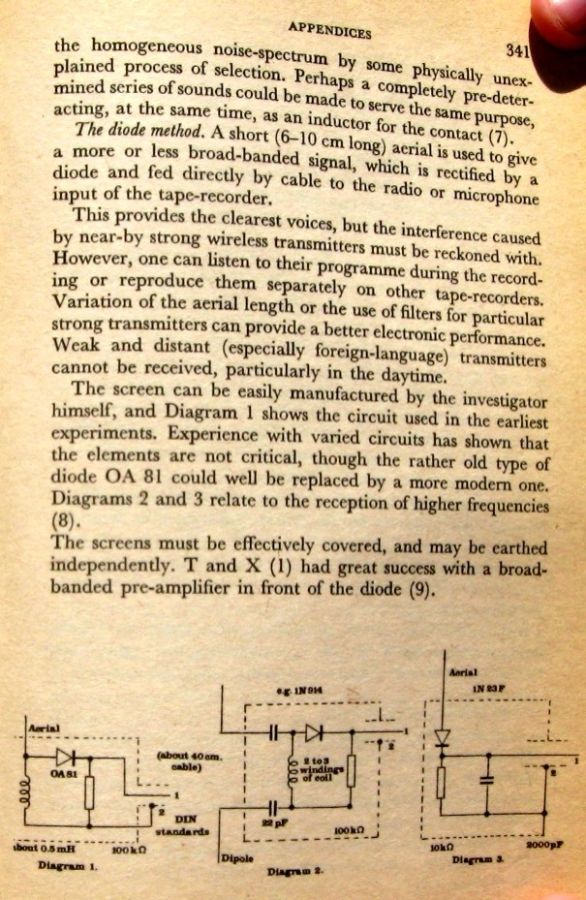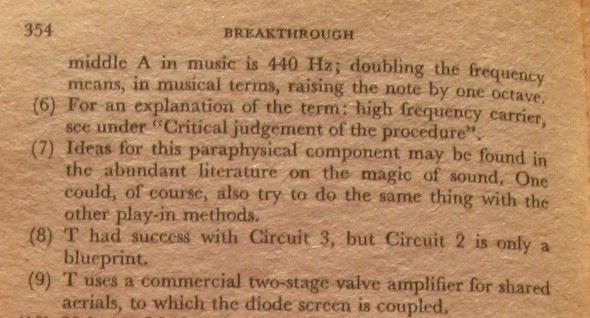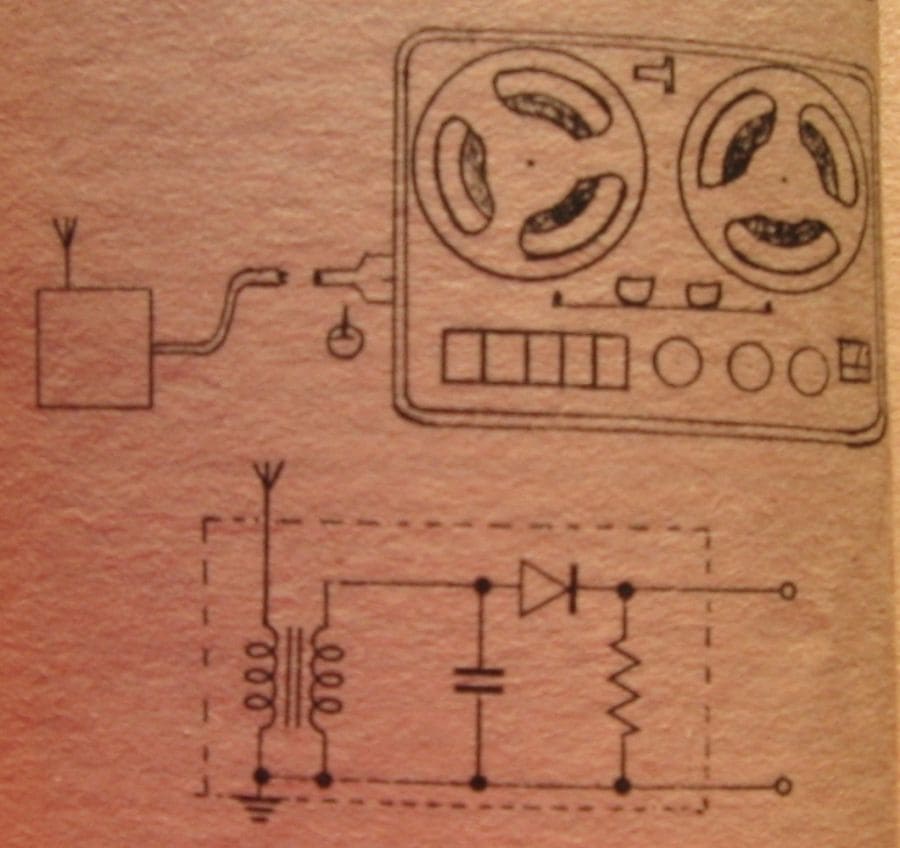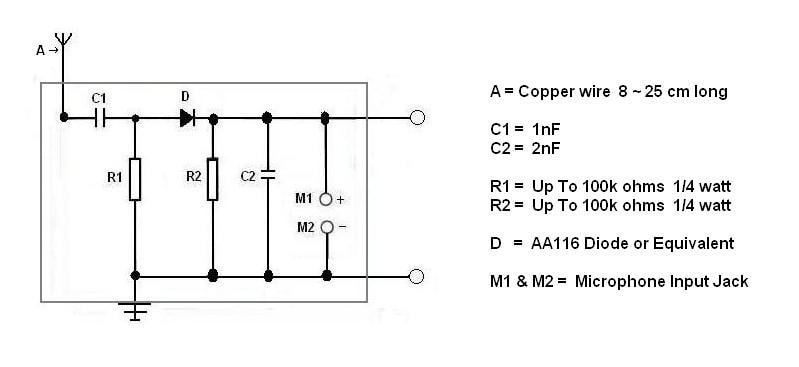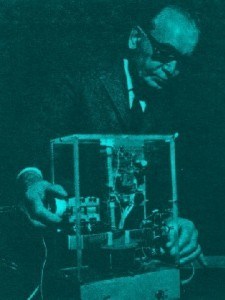By Ron Ruiz
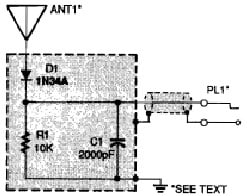 The Raudive Diode has been the source of discussion and frustration among researchers for quite some time.
The Raudive Diode has been the source of discussion and frustration among researchers for quite some time.
If you do an image search for the Raudive Diode you will see various schematics.
This is because the Raudive Diode is not a single circuit or device but rather, a short lived trial and error progression of designs intended to facilitate trans-dimensional communication.
For the purpose of this writing, I shall give a brief overview of the circumstances that lead to the use of the diode.
Genesis
In the beginning….
While Friedrich Jürgenson is officially credited with the 1959 discovery of the voice phenomenon we know today; there had been other individuals prior to 1959 who had attempted to communicate with “the dead” by mechanical means. Mr. Jürgenson retains this title because he was the first researcher to be recognized on an international basis.
During his research, Jürgenson realized that he could obtain louder and clearer EVPs by using the inter-frequency static from a radio that was tuned between two stations.
In the spring of 1960; following the advice of contacts from the other side, Jürgenson began using radio and settled on a Medium Wave frequency range of 1450-1600 kHz.
His optimal frequency; which produced a buzzing or wobbling sound came in at 1480~1485 kHz but varied slightly due to things like atmospheric conditions. To this day, this frequency is known to researchers as the Jürgenson Wave.
In 1964, psychologist and philosopher Dr. Konstantin Raudive became intrigued with the EVP phenomenon after reading Jürgenson’s book Rosterna fran Rymden (“Voices from space”)
Dr. Raudive contacted Jürgenson and arranged a meeting with him in April 1965 where the two men conducted microphone only recordings.
Even though Dr. Raudive could hear an occasional word, he considered these initial recordings somewhat lackluster in quality. This was probably due to Dr. Raudive not understanding the tone and timbre of EVPs. Nevertheless, Dr. Raudive’s interest continued and the two men began to collaborate.
On June 10, 1965 Jürgenson added radio static to their recording sessions. The injection of radio static made all the difference. Dr. Raudive heard voices calling “Friedrich! Friedrich!”; which was Jürgenson’s first name.
But the response that would forever change the landscape of things to come was a response directed to Dr. Raudive: “Do you know Margaret, Konstantin?”
Indeed, Margaret Petrautzki; a very close friend of Dr. Raudive had passed from a serious illness earlier that year on Feb. 10, 1965.
Now hooked, Dr. Raudive parted company with Jürgenson and began to conduct his own research into the EVP phenomenon.
From 1965 to 1968 Dr. Raudive began his own EVP sessions; recording in what he felt were controlled environments. Along the way he invited colleagues and scientists to participate.
In April 1968 physics professor Alex Schneider introduced the diode to Dr. Raudive.
Professor Schneider understood radio’s inherent potential of false EVPs creeping into a recording from station drift. With that in mind he proposed a simple circuit that could only pick up transmissions from the immediate area surrounding the device.
The circuit(s) Professor Schneider chose were based on the old “catwhisker” or crystal radio sets from the early days of radio.
Here is a pic from the appendix of the English version of Dr. Raudive’s book Breakthrough. The description and diagrams seen are the translated words and work of Professor Schneider.
As you read through the page you will notice that Diagram 1 – the most common diode schematic found on the internet was only used during the earliest experiments.
Also note Professor Schneider’s statement about elements within the circuit not being critical. I think this also applies to the circuit itself as long as a crystal radio circuit is being used.
You will notice that there is additional info that relates to circuits 2 & 3 in the form of Notes 8 & 9.
On page 354 we find:
Note 8 says: T had success with Circuit 3, but Circuit 2 is only a blueprint.
Note 9 says: T uses a commercial two-stage valve amplifier for shared aerials, to which the diode screen is coupled.
The publishing of the English version of Dr. Raudive’s 1968 book Unhörbares wird hörbar (“What is inaudible becomes audible”) was contingent upon Dr. Raudive conducting a series of experiments in London for the prospective publisher.
So………on Friday, December 12, 1969, Dr. Raudive arrived in Britain and brought along his equipment including a “diode box”.
On page x of the preface to Breakthrough the diode box is described as a small box twice the size of a match-box with 2 inches of wire sticking out of one end and another small wire at the other end which was to be placed into the input of a tape recorder.
Not understanding the diode’s function and wondering if this diode box was some type of elaborate hoax, one of the publishers arranged for the diode to be inspected by David Stanley; an electrical engineer.
The following day, Mr. Stanley inspected the diode box and within seconds proclaimed the diode and circuit was ordinary and held no particular value. He offered to build another diode box within the hour for the publisher to use during their experiments later that evening.
On page xx of the preface to Breakthrough we find David Stanley’s schematic of Dr. Raudive’s diode circuit as it appeared on December 13, 1969.
Even though there are no values listed for parts, the schematic clearly shows the diode circuit had evolved from Diagram 1 (shown above) to one which included an untapped double coil and capacitor.
This circuit worked well enough for the December 13, 1969 experiments that the next morning found Dr. Raudive signing a contract for the publishing of an English language version of his book.
The book Breakthrough placed EVP’s into the English speaking public arena and allowed Dr. Raudive to emerge as the preeminent motivator of men in the field of Electronic Voice Phenomena…having cataloged well over 70,000 EVP’s by the time of his death in 1974.
Inasmuch as the diode recording concept seemed to work well in recording anomalous voices, the process lacked the ability for the experimenter to inject questions into the recording.
So once again; the diode evolved with Professor Schneider designing another circuit which allowed the input of a microphone.
Here is that circuit:
The use of the 1nF capacitor between the antenna and the diode is to help cut down on mains hum voltage. This circuit also recommends using a grounding wire from the metal enclosure to a grounding source.
While you may still find an AA116 diode somewhere online, an appropriate equivalent would be a 1N60 diode.
If you desire to hear examples of the EVP’s obtained by the Konstantin Raudive; there are several options available to you.
You can purchase the original flex-disc record that came with the Breakthrough book directly from the publisher. Or, you can get the record for free if you purchase the Breakthrough book. The publisher’s site is here:
An “enhanced” version of the flex-disc record is available through Amazon:
www.amazon.com/An-Introduction-EVP-Ghost…+Introduction+to+EVP
Scroll down to #75 & 76 and you will see that for less than $2 you can buy Side A & B of the Breakthrough recordings as an mp3 download.
If you do a youtube search for Konstantin Raudive Breakthrough you can find the flex-disc recording.
If you wish to listen to the EVP’s offered in Raudive’s original German version of Breakthrough you can go here:
www.rodiehr.de/a_30_raudive_unhoerbares_…llpl_einfuehrung.htm
The recordings are at the bottom of that page.
As we have seen, the Raudive diode is nothing more than a crystal radio with a very short antenna.
If you do an online search for crystal radio kit or crystal radio schematics, you will find many kits, plans and parts to choose from in all price ranges.
If you want to experiment in the shortwave band, a search for shortwave crystal radio will point you in the right direction.
AND……you can get FM from a crystal set. Search for FM crystal set and look at the website by a guy named Solomon. He has a couple of very attractive designs.
If you do experiment with any of the crystal set designs, keep in mind that you cannot use regular headphones or earbuds to listen to the audio output. You will need high-impedance headphones or piezo earpieces.
Low impedance inputs like headphones and earbuds (8 ~ 16 ohms) require more current which causes more power loss in the diode; which in turn mean less signal that gets turned into sound.
Using a digital recorder or computer to record Raudive diode circuits or crystal sets should be fine because of the higher impedance of these inputs.
For example; the microphone jack for my Olympus vn3200pc recorder has input impedance of 2K ohms. My Olympus DS-40 has a microphone impedance of 680 ohms. The microphone input on one of my soundcards is >4K ohms.
To be sure…please consult your equipment specifications.
On a sad note…I contacted the publisher of the Breakthrough book and asked him if he still had the duplicate diode that Mr. Stanley had made for the 1969 experiment.
He wrote back that over the years the diode had been cannibalized by various people he had lent it out to.
Here is a pic of all that is left of the duplicate diode:
I guess people thought the parts were somehow special enough to take as souvenirs.
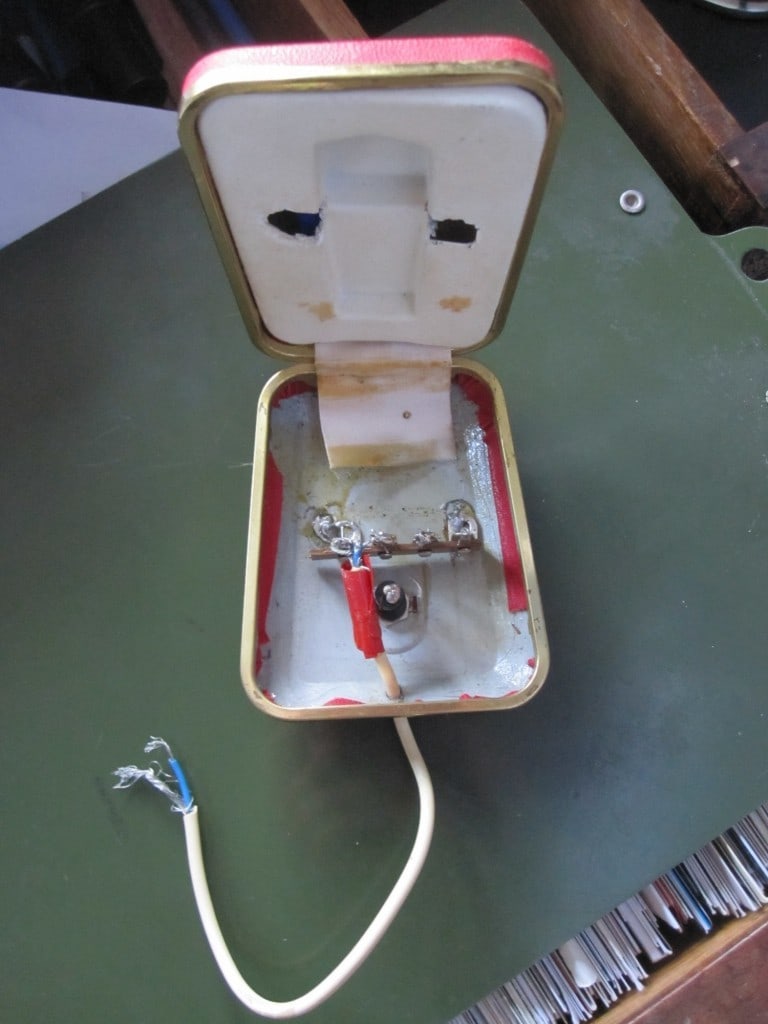
(photo courtesy of Colin Smythe)
Spirit has been talking to us since the dawn of recording devices, I suppose it’s possible that since Jürgenson and Raudive were among the first to listen for them, Spirit made more of a concerted effort to be heard.
However successful the Raudive Diode was , it quickly fell by the wayside in favor of a new device called the Goniometer designed for Dr. Raudive by electronics engineer Theodore Rudolph.
After Dr. Raudive passed away in 1974, the Goniometer was returned to Theodore Rudolph.
5 years later, during a trip through Europe, George W. Meek (of Spiricom fame) obtained the device from Theodore Rudolph and brought it to the US for continued research. After making some necessary repairs to the Goniometer, Mr. Meek forwarded the device to Harold Sherman of the ESP Research Associates Foundation.
On Sep. 16, 1981, George Meek sent a letter to Harold Sherman inquiring about the Goniometer and asking if it could be returned to him if Mr Sherman was done using it.
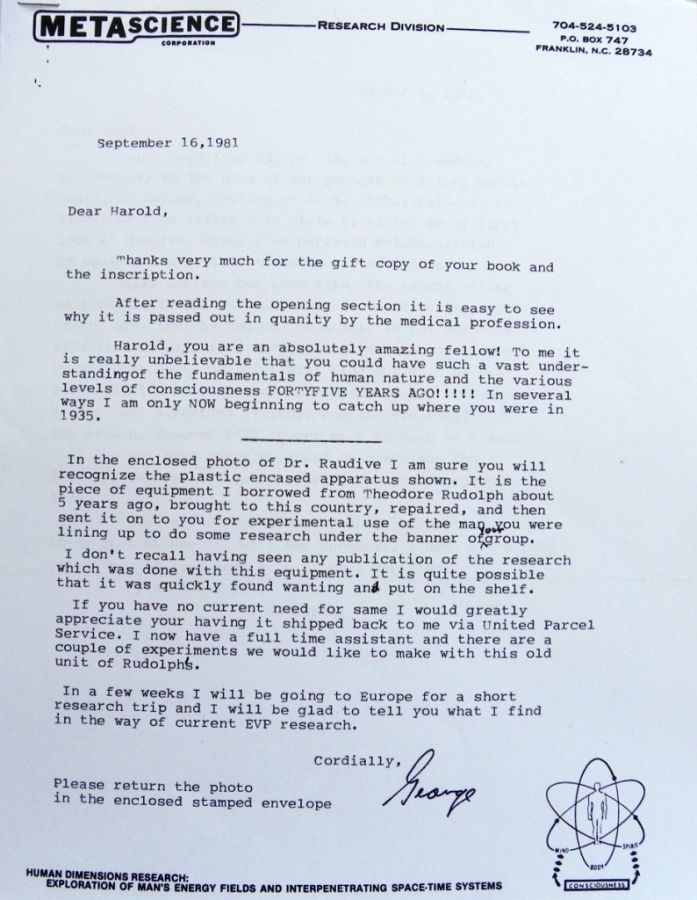 (letter obtained from the Harold Sherman Archives)
(letter obtained from the Harold Sherman Archives)
George Meek received a response from Harold Sherman on Oct. 2, 1981, saying that Foundation associate A. J. Loriaux; was in possession of the Goniometer and that he would ask Mr. Loriaux what had become of the device.
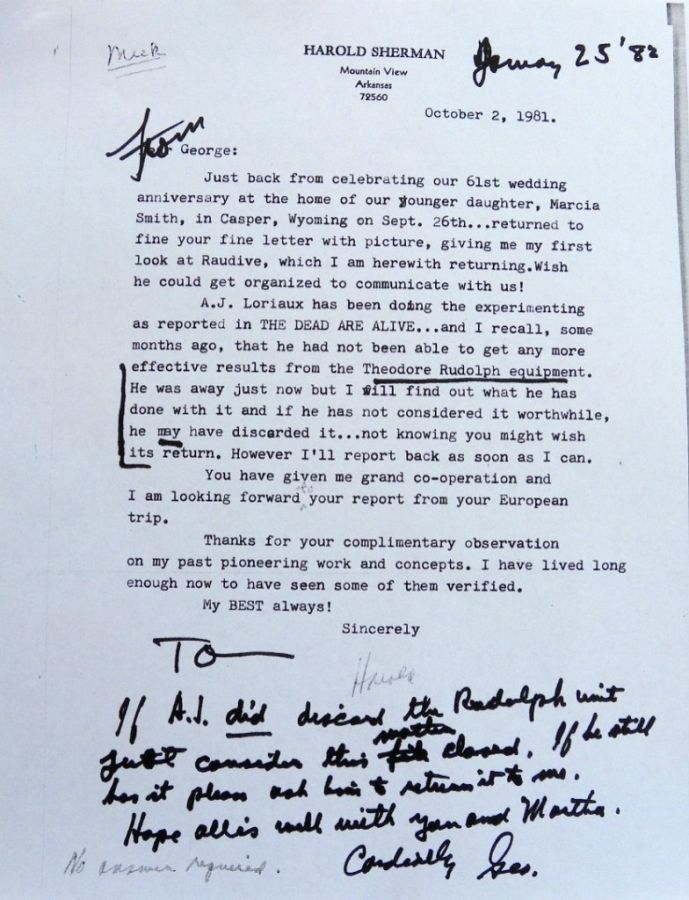 (letter obtained from the Harold Sherman Archives)
(letter obtained from the Harold Sherman Archives)
1982 found George Meek sending a copy of the Sherman letter back and asking again if the Goniometer had been found. In the lower left corner of the page Mr. Sherman’s handwritten reply: “No answer required”
The trail grows cold at this point, leaving me to assume that A. J. Loriaux had in fact; discarded the device to the landfill of history.
Thanks for taking the time to read this,
Ron

